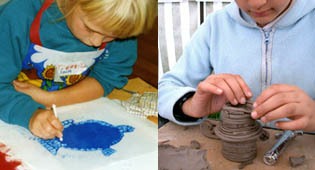











facing the future
How can this be creative?
It is not obvious to us all exactly how digital technology impacts on our lives because we have become so accustomed to using such helpful services -
Digital technology is changing the very nature of our lives, greatly expanding our creative horizons by developing a do-
Do-
Digital technology allows us to do things which previously we had to rely on "experts" to do. User-
When you remember how this all started in such a very basic way when we all had to learn how to use a keyboard, inputting stuff into our own personal magic box, which looked like a TV but in reality was just a black screen with words and numbers.
Now you can publish your own books, make your own photographic prints, create your own films and music, and share them worldwide. You can visit online libraries all over the world and therefore do your own research, including accessing original old books and material, hard-
You can campaign on issues with little start up costs, join in forums and petitions worldwide, raise ‘kickstarter’ money for interesting projects from individuals rather than bank loans, and you can even print your own products or prototypes in 3D, create designs for everything from textiles to architecture, to motor car engines and run powerful systems to regulate anything and everything.
It has now become so sophisticated it is beginning to know what you want before you do.
This do-
Transforming our idea of the world
In the 1960’s our image of the world was changed dramatically with the beautiful view of our blue planet from the outer space shuttle orbiting around the moon. In hindsight we can see that this new image made it easier for people to think in global environmental terms, developing wider concerns about pollution and world population explosion -
Now we find ways of thinking about our world are changing yet again -
This has been augmented by filming every street allowing us to navigate right up to individual front doors in StreetView, adding information on alternative travel routes, ‘tags’ for galleries, shops, cafes, and current public events. Into this mix comes interactive content from individuals -
what do we mean -
• there is special knowledge and understanding to be gained by making things
• childhood plays a vital part in this innovative process
a historical perspective
• observation, trial and error
• origins of maths
• patterns and geometry
facing the future
growing concerns
• Neil MacGregor
• Sherry Turkle
• Seymour Papert